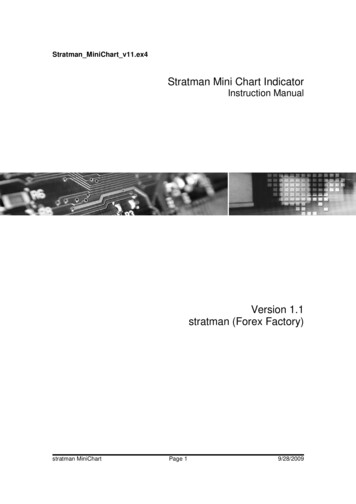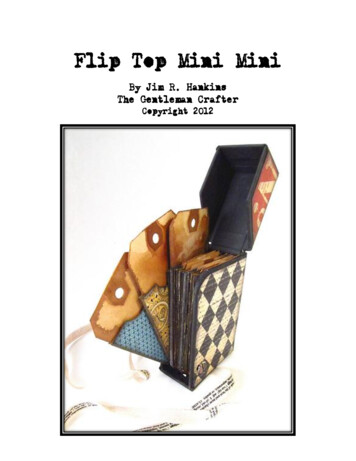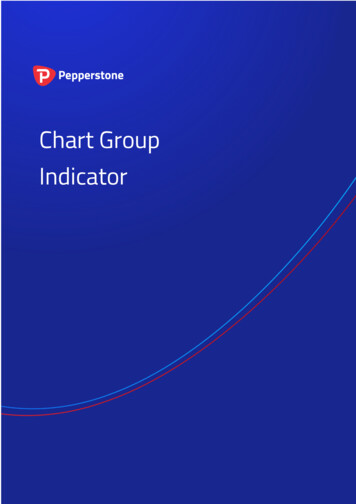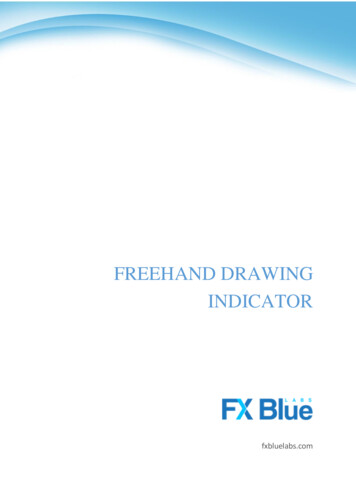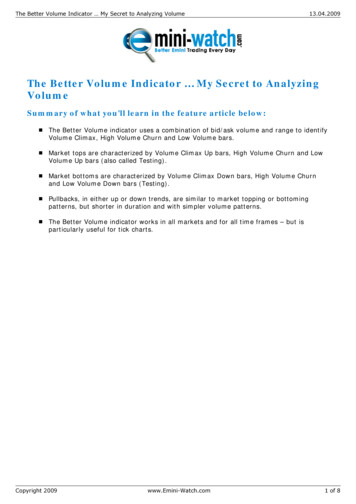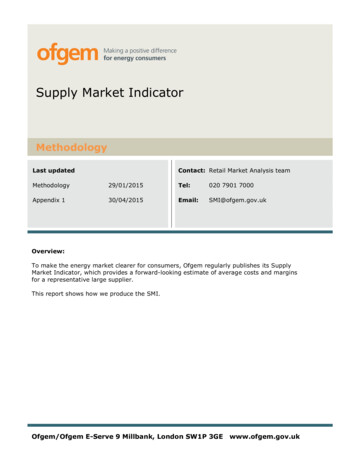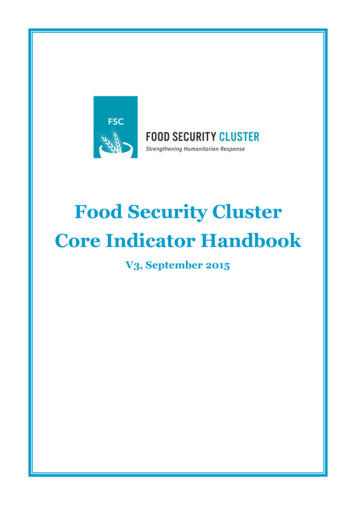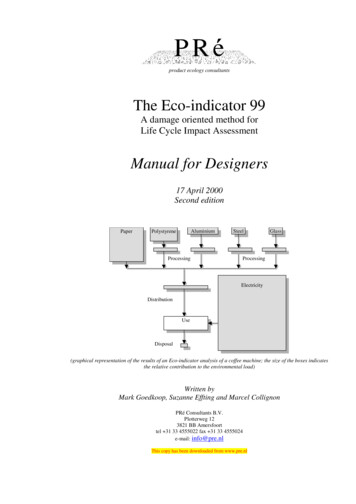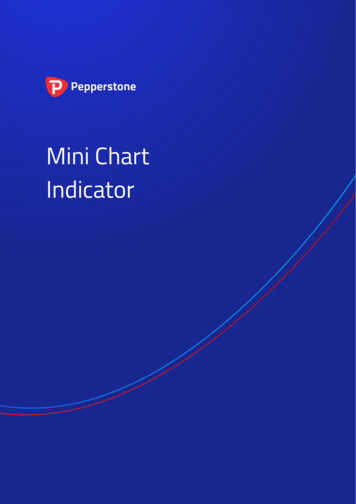
Transcription
Correlation Matrixhttps://fxview.com/Mini Chart Indicator
Mini Chart Indicator1.2.https://fxview.com/Overview . 2Using the Mini Chart indicator . 32.1 Adding the indicator to a chart . 32.2 Choosing the symbol . 32.2.1 Inverting prices . 32.3 Chart timeframe / type. 32.3.1 Seconds charts . 42.3.2 Tick charts . 42.3.3 Tick lines . 42.3.4 Renko, Range, Kagi, and Point & Figure charts . 42.4 Data transformations . 62.5 Drawing style and colours . 62.6 Minimum, maximum, and grid . 72.6.1 Maximum and minimum. 72.6.2 Horizontal grid . 72.6.3 Vertical grid . 72.7 Size and position . 72.8 Indicators . 82.8.1 Moving averages (SMA, EMA, SMMA, LWMA) . 82.8.2 Bollinger bands . 82.8.3 Envelopes (SMA and EMA) . 82.8.4 D1 high and low . 92.8.5 H1 high and low . 92.8.6 Linear regression . 92.8.7 Fixed price . 92.8.8 Current bid price . 91
Mini Chart Indicator1.https://fxview.com/OverviewThe Mini Chart indicator creates a chart in a draggable, resizable sub-window inside a main MT4chart. It lets you see the price action on other instruments and/or timeframes without needing toswitch between different MT4 charts.The Mini Chart has a wide variety of features: Timeframes such as M4 and H3 in addition to standard timeframes such as M1 or H1 Tick bars (e.g. bars made up of 10 ticks each) and seconds bars (e.g. 20-second bars) Range, Renko, Kagi and Point & Figure charts Data-transformations such as Heikin Ashi and Three Line BreakAlthough you cannot add MT4 indicators to a Mini Chart, it does provide its own options for showingpopular indicator calculations such as moving averages and Bollinger bands.2
Mini Chart Indicator2.Using the Mini Chart indicator2.1Adding the indicator to a charthttps://fxview.com/You add the Mini Chart indicator to a chart in the usual MT4 way, either by dragging it from theNavigator onto a chart, or by double-clicking on it in the Navigator. You can also use standard MT4features such as adding the indicator to your list of Favorites, or assigning a Hotkey to it.You need to turn on the “Allow DLL imports” setting in the “Common” tab of the indicator’s options:2.2Choosing the symbolYou set the symbol to display using the Symbol parameter in the Inputs tab. The symbol must bepresent in the MT4 market watch, and you should include any suffix which your account has forsymbol names, e.g. EURUSD To display more than one symbol, you simply add multiple copies of the indicator to the chart.You can also leave the symbol set to (current). This will then display the same symbol as the mainMT4 chart, and will change if the main chart changes.2.2.1Inverting pricesYou can invert prices by turning on the option on the Inputs tab. For example, this will convertUSDJPY into JPYUSD.2.3Chart timeframe / typeYou choose the chart timeframe, or a type such as Kagi, using the option on the Inputs tab.If you leave the timeframe set to (current) then the Mini Chart will use the same timeframe as themain MT4 chart, and will change if the main chart changes.3
Mini Chart Indicatorhttps://fxview.com/The Mini Chart offers a range of different timeframes and chart types: Standard timeframes such as M5 and H1 Extra timeframes such as M4 and H6 Sub-minute, seconds-based time periods such as S10 and S30 Tick-lines, i.e. lines showing each change in the ask and bid price Tick charts, i.e. candles which are not time-based and are instead made up of the samenumber of ticks Price-based charts such as Renko and Kagi2.3.1Seconds chartsMT4 does not have historic data at frequencies under 1 minute (M1). Therefore, the Mini Chartcannot show a history for a seconds-period such as S30 when it loads. The indicator can only startrecording and showing the data from the time that it starts running.2.3.2Tick chartsTick charts draw a new bar every N ticks (i.e. they are based on activity, not on time). You need to fillin the number of ticks you want to use in the setting on the Inputs tab.As with seconds charts, MT4 does not have historic data at frequencies under 1 minute (M1), and canonly show the tick bars from the time that the indicator starts running.2.3.3Tick linesA tick-lines chart shows the ask and bid prices as separate lines, updating whenever either the ask orbid price changes (i.e. each new tick).2.3.4Renko, Range, Kagi, and Point & Figure chartsRenko, Range, Kagi, and Point & Figure charts are price-based rather than time-based, and draw newbars based on price movement instead of time elapsing. All of them use a “block” size, which you setusing the Inputs tab. This defines the minimum price movement which is required before the chartchanges. It can be set either to a price amount (e.g. 0.0010), or a value in pips (e.g. 10), or to apercentage change (not applicable to P&F). Range charts: a new bar is drawn each time that the price rises or falls by the blocksize. The Mini Chart indicator also offers stacked range charts, where consecutivebars in the same direction are combined into a single bar. Renko charts: similar to range charts, but the price must reverse by two whole blocksbefore a new block is drawn in the opposite direction to the current trend. The Mini4
Mini Chart Indicatorhttps://fxview.com/Chart indicator offers a variant on standard Renko charts which draws the “tails” oneach bar, i.e. the movement in each bar against the trend. Kagi charts: the chart changes direction when the price reverses by the block sizefrom the previous high/low. Each additional movement in the direction of the currenttrend extends the Kagi line, and therefore, unlike range or Renko charts, Kagi highsand lows are not aligned to a grid. Point and Figure charts: similar to range charts, but traditionally drawn in a differentway, with consecutive movements stacked rather than displayed as separate bars, andwith a reversal rule where a new bar is not drawn in the opposite direction until theprices reverses by three units.2.3.4.1Reversal factorFor Range and P&F charts you can also set the “reversal” amount which is required before the chartchanges direction. If left at zero, then Range charts will use a reversal factor of 1 – i.e. the thresholdfor a new block in the opposite direction is the same as for a continuation – and P&F charts will usethe standard P&F reversal factor of 3 – i.e. the price must reverse by 3 units before a new column isdrawn on the P&F chart.2.3.4.2Base timeframe for Range, Renko, Kagi, and P&F chartsWhen the Mini Chart indicator loads, it will create historic data for Range, Renko, Kagi, and P&Fcharts using the price history in the trading platform.By default this creates the history from M1 data. If you use a large block size (e.g. 1 whole cent, pricechange of 0.01, on EUR/USD), then there may not be many historic blocks over the period covered bythe M1 data in the platform.To go further back in time you can choose a longer base period such as M30 or H1. The disadvantageof longer timeframes is that the Mini Chart cannot be certain what happened inside each historic bar.It can only “see” the high and low. If a historic bar covers a price range such as 0.04, and the blocksize is 0.01, then the Mini Chart does not know, and has to guess, whether the price went up/down infour simple sequential blocks rather than bouncing up and down within the bar, creating severalhistoric blocks.5
Mini Chart Indicator2.4https://fxview.com/Data transformationsThe Mini Chart indicator provides popular transformations of the bar data: Heikin AshiThree Line Break 2-bar average (i.e. each bar is the average of itself and the previous bar) 3-bar average(Transformations are different to chart types such as Kagi or Renko. With a chart type such as Kagi,there is a price-based rule for when/how to draw each new bar, i.e. a rule which is not simply based ontime such as H1 or S30. A transformation such as Heikin Ashi takes bar data such as H1 and appliesaveraging to it. A Heikin Ashi chart has an underlying timeframe, such as H1. A Kagi or Renko chartdoes not.)2.5Drawing style and coloursYou can use the Inputs tab to change the style and colours. The Mini Chart offers a range of drawingstyles: Candles Bars (i.e. a central high-low bar with open and close horizontal markers) A line showing each close price Close points (i.e. dots at each close price, without a line) Lines showing the high and low (but not the close) A filled channel showing the high and low, with a line showing the close inside thechannel No drawing – the bars themselves are not drawn, and only indicators are displayed.Please note: the drawing style is fixed for tick-lines, Kagi, and P&F charts. Changing the style settinghas no effect for these types of chart.6
Mini Chart Indicator2.6Minimum, maximum, and grid2.6.1Maximum and minimumhttps://fxview.com/By default the Mini Chart will automatically select a high and low range to draw based on the barswhich are visible (as MT4 itself does). You can use the Inputs tab to tell the Mini Chart to include anyindicator values in the high-low. Otherwise, as in MT4, indicator values may be invisible off the topor bottom end of the chart.You can also set a fixed maximum and/or minimum price for the chart using the Inputs tab.2.6.2Horizontal gridBy default the Mini Chart will automatically draw horizontal grid lines. It will choose the nearestpower of 10 (e.g. 0.01, 0.001) which does not create an excessive number of visible lines.You can set a specific grid size using the Inputs tab, setting the parameter to a price amount such as0.0020, or you can turn off the grid entirely by setting the parameter to zero.2.6.3Vertical gridBy default the Mini Chart will automatically draw vertical grid lines based on the charttimeframe/type which you select. You can change the vertical grid lines, or turn them off, using theInputs tab.Please note: for chart types such as Renko and Kagi which are based on price movement rather thantime, the vertical grid lines will not be evenly spaced.2.7Size and positionYou can use the Inputs tab to set the indicator’s initial position within the MT4 chart. You can definea position in terms of pixels (replacing the default values of -1) from a specific corner of the chart.The Mini Chart is both draggable and resizable, in the usual way by pressing and holding the mouseover the sub-window’s title bar or border. By default the indicator will then choose a corner of thechart to “dock” itself to. For example, if you drag the sub-window close to the bottom-right corner,the indicator will then dock itself to that corner of the chart. If you resize the chart window, theindicator will automatically re-position itself so that it maintains the distance from the edge(s) of thechart. You can manually override the docking using the setting on the Inputs tab.7
Mini Chart Indicatorhttps://fxview.com/You can also change the following settings for the chart: The zoom level, i.e. how large each candle/bar is The amount of space (in pixels) at the top and bottom of the chart The amount of space (in pixels) at the right of the chart (i.e. equivalent to the chartshift on MT4’s own chart) The height of the bar which shows the time and price corresponding to the position ofthe mouse. You can turn off this information bar entirely by setting the height to zero.2.8IndicatorsYou cannot add MT4 indicators (e.g. moving averages) to a Mini Chart, but you can use the Inputs tabto configure the display of popular indicator calculations. This includes drawing lines at fixed prices,i.e. the equivalent of drawing a horizontal line on a main MT4 chart.You can define up to 10 indicator calculations. For each one, you can choose a drawing style and acolour.For some indicators, you can change the parameters and/or or the type of price – close, high, low etc –which is used in the indicator calculation. In other words, the meaning of the Parameter A andParameter B values on the Inputs tab depends on the type of indicator, as described below.2.8.1Moving averages (SMA, EMA, SMMA, LWMA)The Parameter A value defines the period for the moving average calculation. You can also choosewhich price to apply the average to. Parameter B is unused.2.8.2Bollinger bandsThe Parameter A value defines the period for the average (the mid-point of the bands). The parameterB value defines the number of deviations for the bands, from the mid-point. You can also choosewhich type of price to use in the calculation.2.8.3Envelopes (SMA and EMA)The Parameter A value defines the period for the moving average (the mid-point of the envelopebands). The Parameter B value defines the % for the envelopes, e.g. 0.1% from the moving averagemid-point. You can also choose which type of price to use in the calculation8
Mini Chart Indicator2.8.4https://fxview.com/D1 high and lowDraws horizontal lines at the D1 high and low. The Parameter A value defines the offset, and theParameter B value defines the number of D1 bars to include (defaulting to 1 if left at zero).For example, Parameter A 1 and Parameter B 3 means “the high and low of the 3 D1 bars startingyesterday”.2.8.5H1 high and lowSame as the D1 high and low, with the same meaning for the Parameter A and Parameter B values,but using H1 data rather than D1 data.2.8.6Linear regressionDraws a line showing the linear regression of the last N bars, defined by the Parameter A value. Youcan choose which type of price is used in the calculation (e.g. linear regression of the highs rather thanthe closes). The Parameter B value is unused.2.8.7Fixed priceDraws a horizontal line at the fixed price specified by Parameter A, i.e. the equivalent of manuallydrawing a horizontal line on an MT4 chart. You can also use the Parameter B value to draw a secondline at a different price.2.8.8Current bid priceDraws a horizontal line at the current bid price (i.e. constantly changing). The Parameter A and Bvalues and the price-type are not used.9
Mini Chart Indicatorhttps://fxview.com/Trade Responsibly: CFDs are complex instruments and come with a high risk of losingmoney rapidly due to leverage. The vast majority of retail client accounts lose moneywhen trading in CFDs. You should consider whether you understand how CFDs work andwhether you can afford to take the high risk of losing your money. Please read our full RiskDisclosure and Warnings Notice.Disclaimer: This material is considered a marketing communication and does not contain,and should not be construed as containing, investment advice or an investmentrecommendation or, an offer of or solicitation for any transactions in financial instruments.Past performance is not a guarantee of or prediction of future performance. FxView doesnot take into account your personal investment objectives or financial situation. FxViewmakes no representation and assumes no liability as to the accuracy or completeness of theinformation provided, nor any loss arising from any investment based on arecommendation, forecast or other information supplied by an employee of FxView, a thirdparty or otherwise. Please read our legal documents and ensure that you fully understandthe risks before you make any trading decisions.Data Source: FX Blue Labs10
By default the Mini Chart will automatically select a high and low range to draw based on the bars which are visible (as MT4 itself does). You can use the Inputs tab to tell the Mini Chart to include any indicator values in the high-low. Otherwise, as in MT4, indicat
